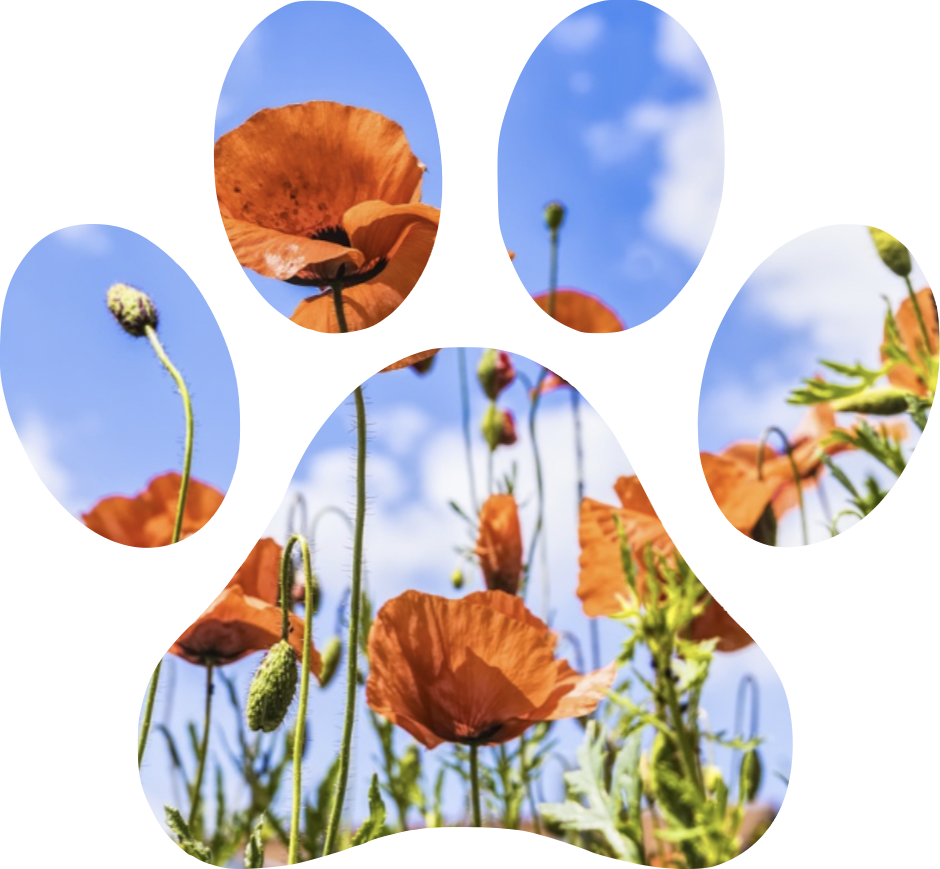The most recent research shows that approximately 56% of dogs are overweight! However, many owners aren’t sure what to look for to help them determine if their pet is overweight and it might come as a shock when the vet suggests a diet.
Being overweight is the leading cause of arthritis in dogs and can also contribute to diabetes, pancreatitis, bladder stones, urinary crystals, liver disease, kidney disease, high blood pressure, heart disease, difficulty breathing and increased risk of heat stroke, many of which are life threatening conditions. Overweight dogs are also at a higher anaesthetic and surgery risk. Excess weight can also restrict breathing. Not to mention, it significantly decreases your pet’s quality of life. So giving your pup that extra little tidbit might just be killing them with kindness.
While your pet’s breed average can provide a starting point for what their ideal weight may be, the best way to determine if your pet is overweight is using a body condition score. This article delves into body condition scoring and how you can learn to assess if your dog is at an ideal weight at home. Keeping your dog at an ideal weight will set them up for a long, happy and healthy life!
Contents
•What is a Body Condition Score?
•How is a Body Condition Score Assessed?
•What are the Body Condition Scores?
•Breeds Most Commonly Diagnosed As Overweight
•How to Help Your Dog Lose Weight
•List of Common Breed Ideal Weights
What is a Body Condition Score
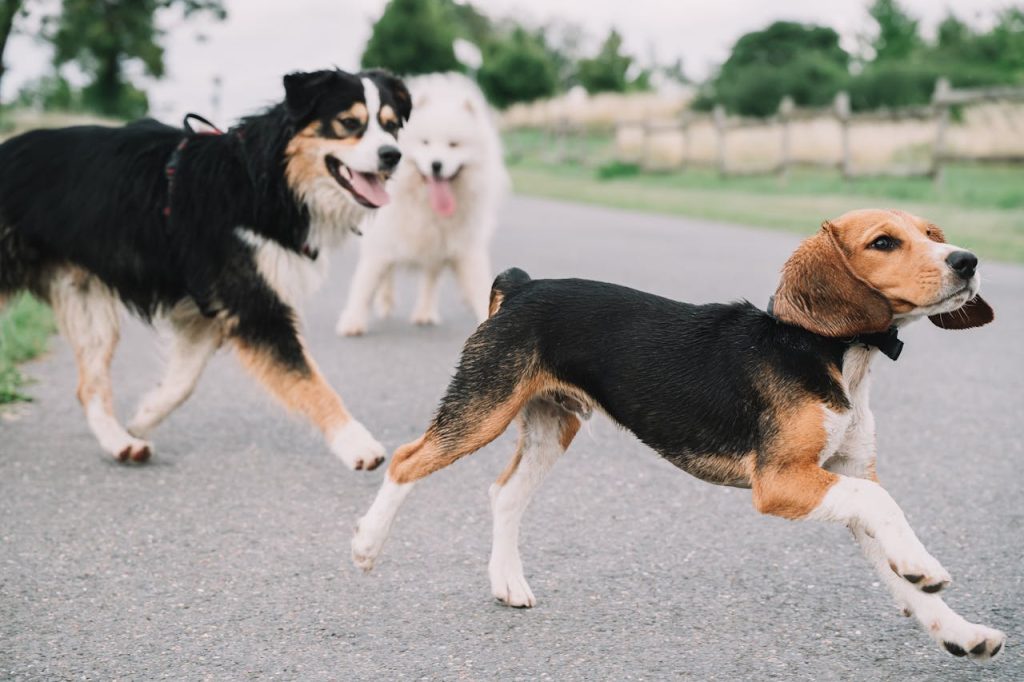
A body condition score is a number out of 9 assigned to a pet based on how much visible/palpable fat is on their body. A score of 1/9 is considered emaciated while a 9/9 is severely obese. An ideal body condition score sits at 4 or 5.
Body condition scoring is used because different breeds have different body shapes, which can mean that height is an inaccurate guide for gauging the ideal weight of an individual. For example, the Staffy tends to be a stocky breed with more muscle weight or a Greyhound is tall but very thin. Instead, body conditioning uses visual cues that are consistent in all breeds.
How is a Body Condition Score Assessed?
Body condition score assessment is made by feeling the ribs, assessing abdominal tuck and waist visibility, and looking at the tail base.
1. The Ribs
A dog at its ideal weight will have easily palpable ribs and spine, but they are typically not visible when the dog is standing square. If pressure must be applied to feel the ribs or they are difficult to feel at all, then your dog is overweight. If the ribs are visible and well defined on palpation then this can indicate an underweight dog.
If you have a fluffy dog, be sure to get your fingers in to the skin and move the skin over the ribs. Fur can conceal prominent ribs, but could also lead to an assumption that the pet is just “fluffy” when they are in fact overweight.
A tip when feeling the ribs is that in most cases they should feel like the bones on the back of your hand. Pressure shouldn’t need to be applied to feel them and you should be able to feel a slight gap beside each rib bone. If the ribs feel like your knuckles, then your dog is underweight. If they feel like the palm of your hand beneath your fingers, then your dog is overweight.
2. A Waist
When looking at your dog from above, they should have a smooth contour curving in so that the abdomen is thinner than the ribs. You are looking for that ‘hour-glass’ figure.
Underweight dogs will have a pronounced waist and it may cut in more sharply than the smooth curve of in ideal weight dog. If the ribs continue straight on to the abdomen, then this is a sign of carrying excess weight. Extremely overweight pets get a ‘barrel’ look. It is best to avoid this occurring.

3. Abdominal Tuck
A waist should also be visible when looking at your pet from the side. The abdomen should tuck up and become narrower than the chest, again with a smooth curve.
If your dog is underweight, they will have an exaggerated abdominal tuck and may appear like they are trying to suck their abdomen in. Overweight dogs tend to have no tuck and the chest continues on directly to the abdomen. In more severely overweight pets, the abdomen may even sag.

4. Tail Base
In a healthy weight dog, the pelvis and spine should be barely or not visible, but should be easily palpable. Where the tail meets the torso, there should be a smooth transition, while the spine remains easily palpable.
In an underweight dog, the pelvis and spine become visible and prominent. In overweight dogs, there tends to be a lot of thickening due to fat at the join between the tail and torso. It may also become difficult to feel the spine and pelvis.
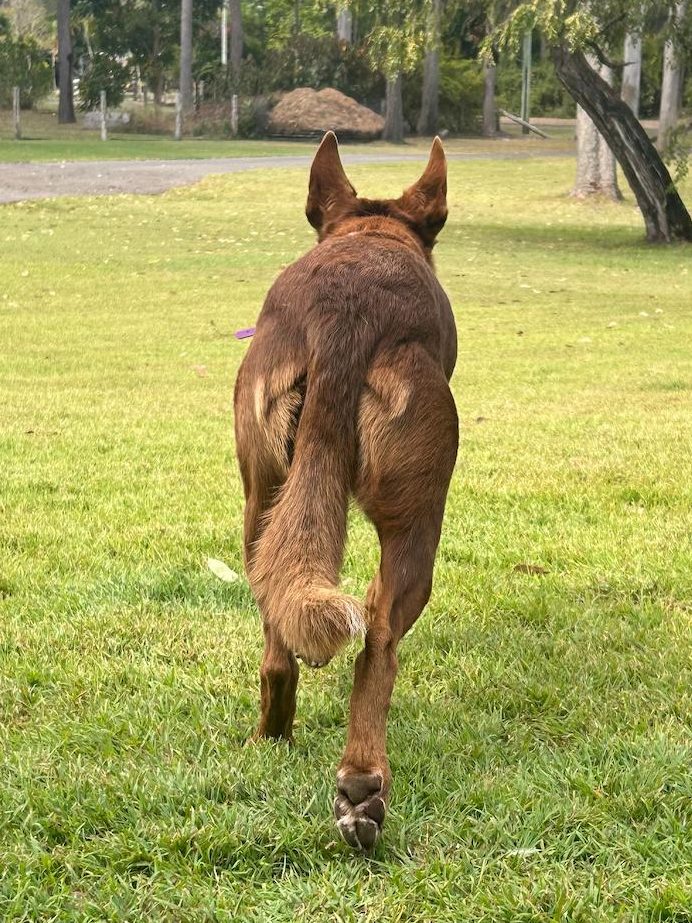
What Are The Body Condition Scores?
Below are some great image guides from Royal Canin to assist in body condition scoring your pet. While the guidelines tend to be consistent, different breed sizes are shown below.

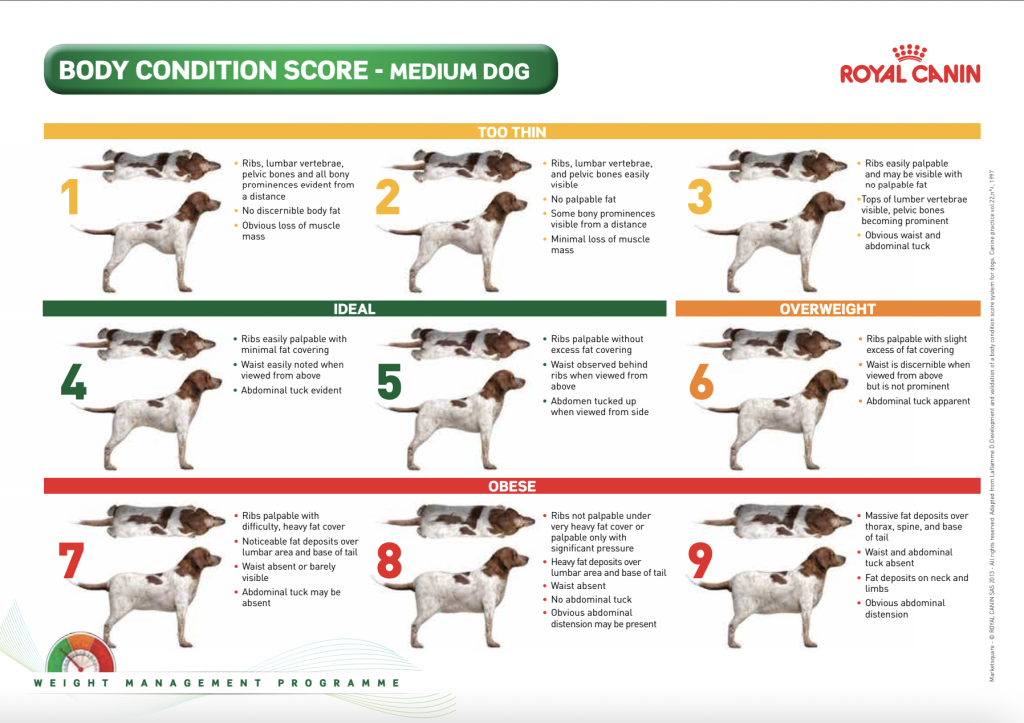

If you have any questions about your dog’s weight, feel free to pop in to the clinic for a weight check and body condition assessment with the nurses. Or you could ask your vet at your next check up. Remember, your vet doesn’t want to fat shame your dog, we are just looking out for their health!
Breeds Commonly Diagnosed As Overweight
Obesity is all about food intake. As such, any breed can get overweight as long as their daily energy intake is greater than their daily energy usage. However, there are some breeds, often highly food driven, that are more commonly diagnosed as overweight.
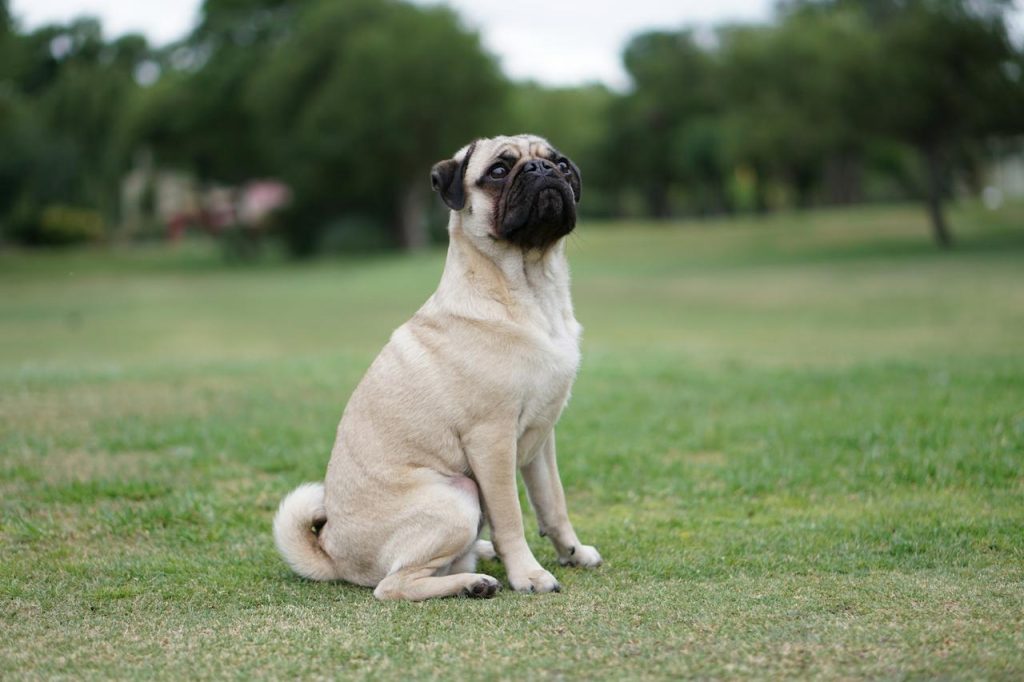
Pug
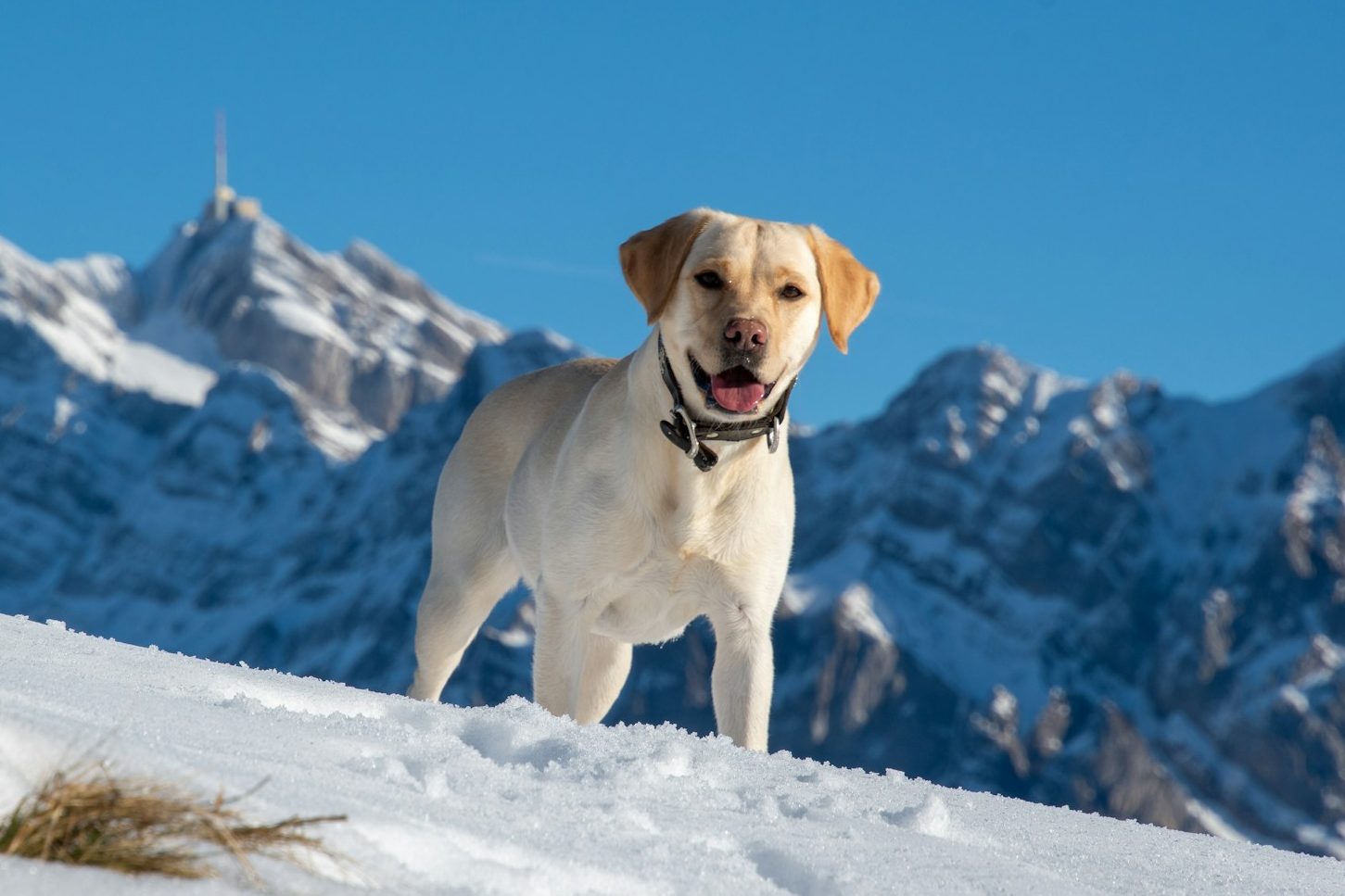
Labrador Retriever
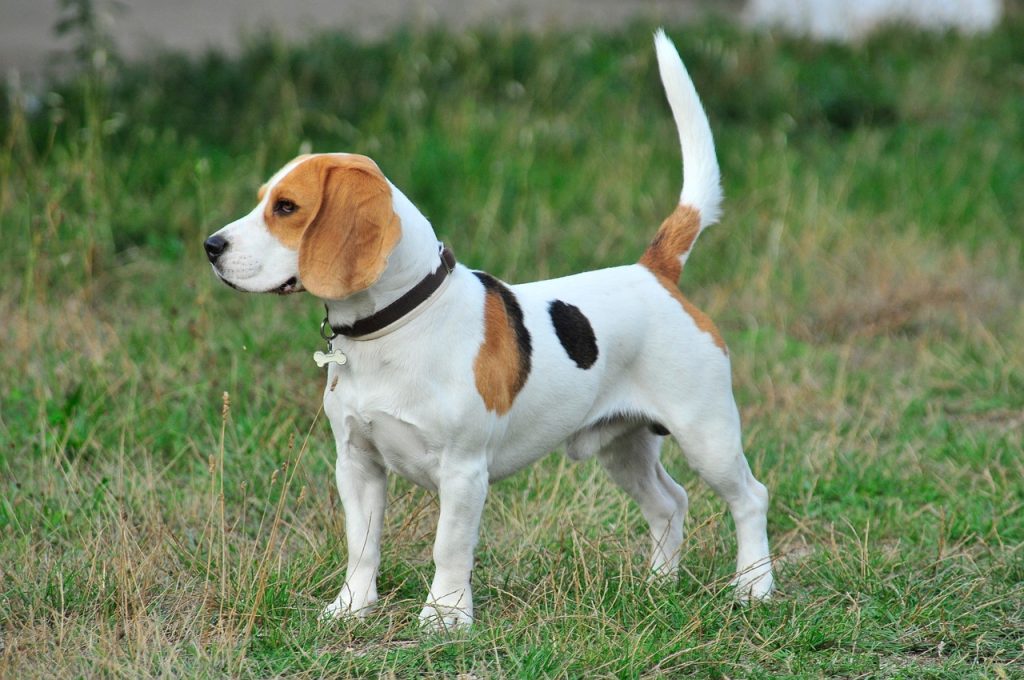
Beagle

Golden Retrievers
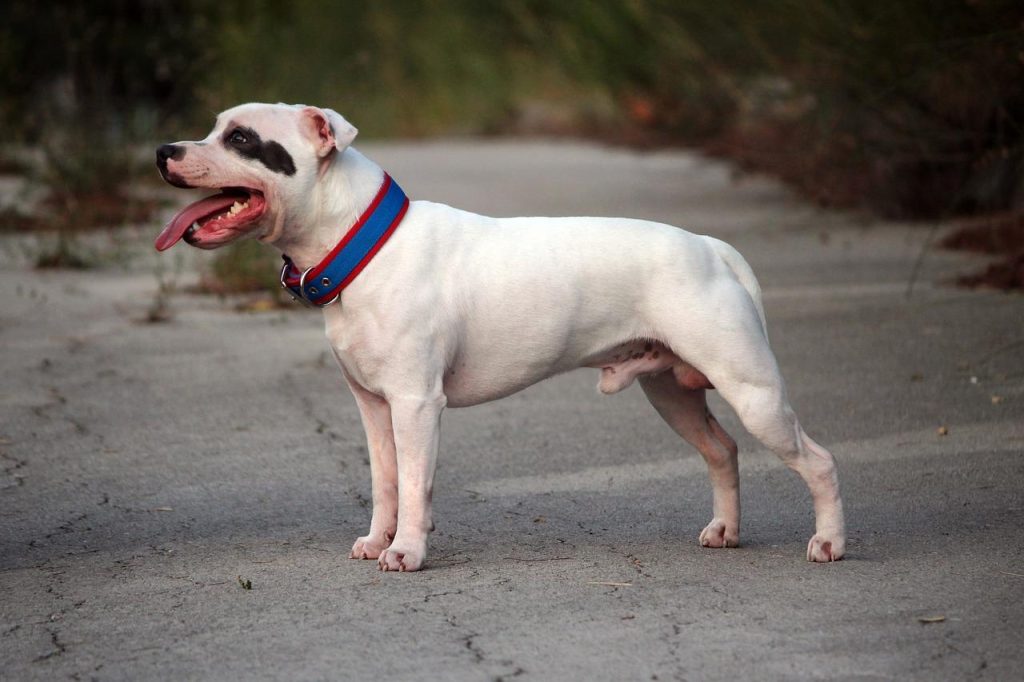
Staffordshire Bull Terrier
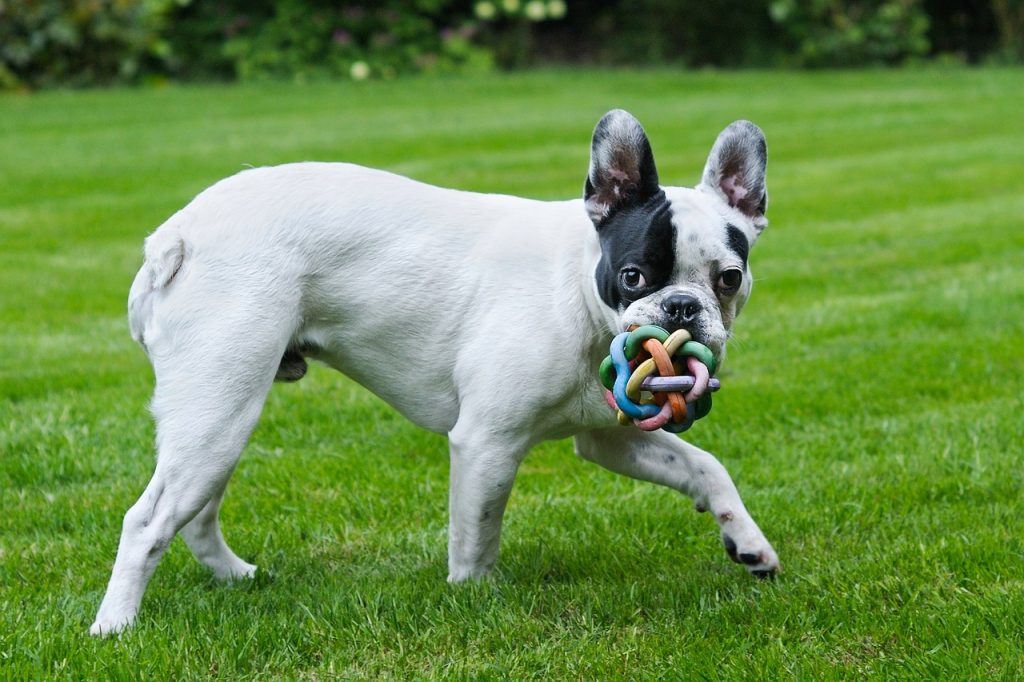
French Bulldog
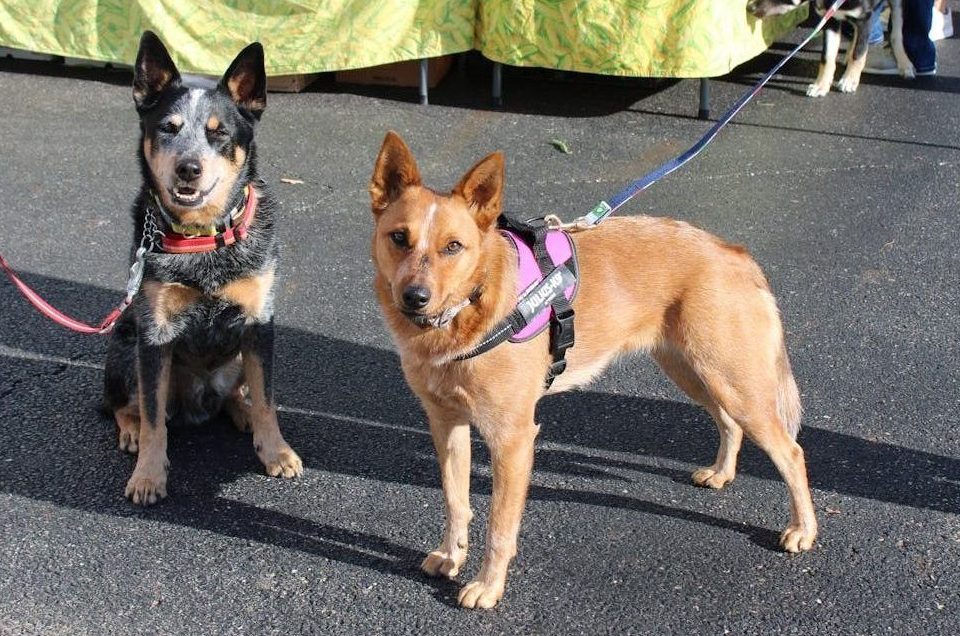
Australian Cattle Dog
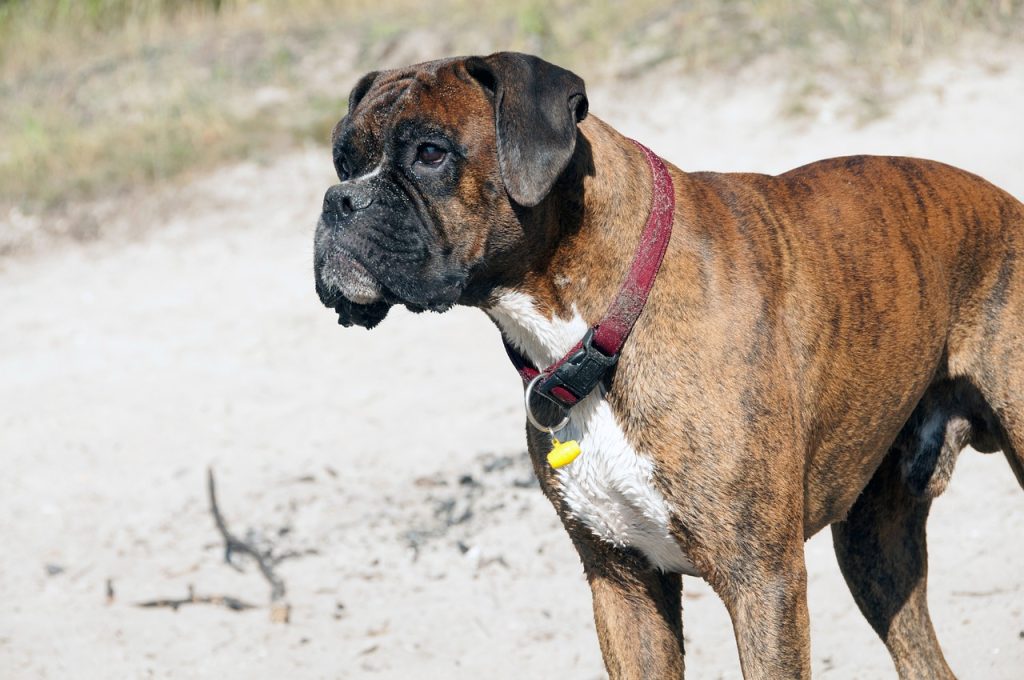
Boxer
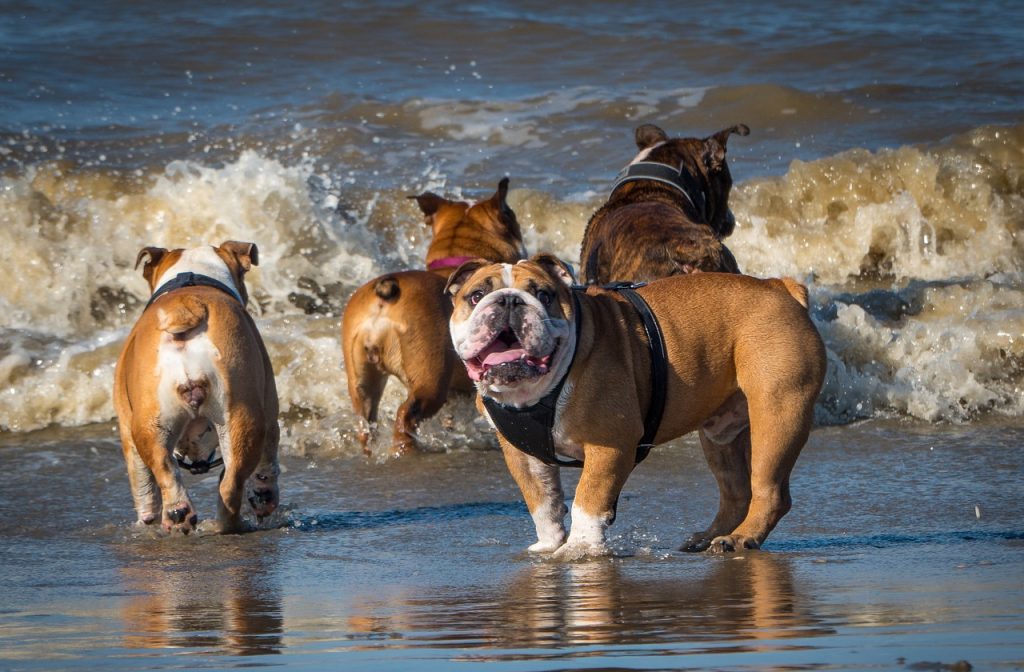
Bull Dog
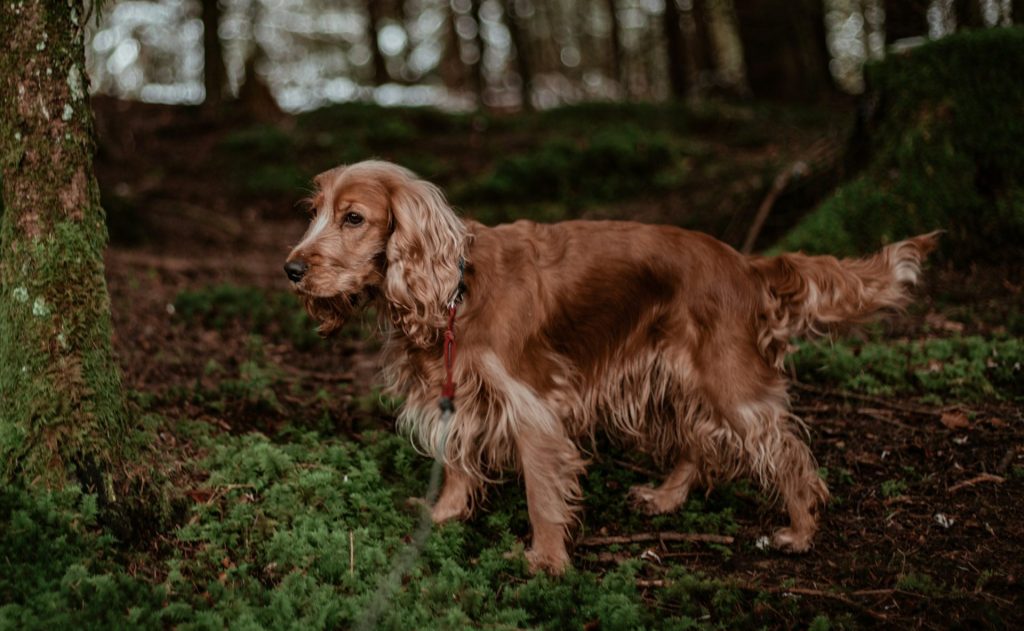
Cocker Spaniel
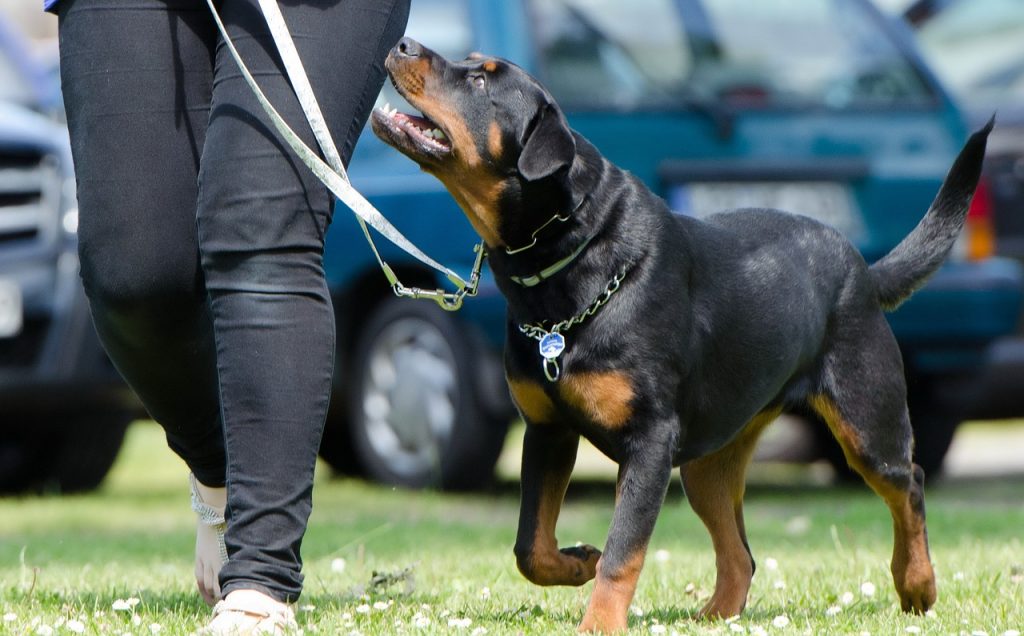
Rottweiler

Dachshund
How to Help Your Dog Lose Weight
If your dog is carrying a little bit of extra weight, then you can start their weight loss journey at home. Getting your dog back to an ideal weight can make them healthier, reduce their risk of serious illness and improve their every day quality of life.
Diet
Weight gain is all about energy intake! Every day, your dog burns a specific amount of energy called their Daily Energy Requirement. If your dog is receiving more energy in the food they consume than they are using, their body will store the excess as fat. Once the energy has been stored as fat, the only way to break it down is for the body to go into an energy deficit and start using fat as an energy source. You can make some changes to their diet to kickstart their weight loss journey.
What They Eat
It’s important to ensure that even if your dog is on a diet, they are still meeting their daily nutrient requirements for protein, vitamins and minerals. A diet targeted at weight loss will be low carbohydrate, low fat, high protein and high fat. Protein acts as the primary source of energy for dogs and fibre creates a feeling of satiety in your pet to decrease the amount of food they want to eat.
The easiest way to feed an appropriate diet that ticks all their requirement boxes is to choose a good quality, already formulated weight loss diet. If your vet has recommended a diet, then prescription diet options like Hills Prescription Diet Metabolic or Royal Canin Veterinary Satiety, would be ideal options. Otherwise look for weight management options such Hills Light or Perfect Weight, Royal Canin Light Weight Care, Advance Health Weight or Black Hawk Weight Management. If you are using pre-prepared fresh style or raw meals (such as Lyka, Nosh Project or Big Dog), some of these will also have a weight loss or low fat diet available.
How Much They Eat
The first step when starting your pet on a diet is to reduce their daily dietary intake. If you aren’t very maths savvy, an easy option is to halve their current intake. Alternatively, you can use the feeding guides on the back of the packaging based on your dog’s ideal weight. Your vet can help you determine your pet’s ideal weight if you are unsure, or you may be able to use a weight closer to the normal range for the breed.
How They Eat
This is where puzzle toys, slow feeders and Lickmats play a major role! Slowing down your dog’s eating or spreading out their daily meal allowance over several small meals (rather than 1 or 2 large meals) can keep them feeling full for longer and reduce how much they want to eat. Slow feeders are not only great for slowing down eating, they also provide a great source of mental stimulation and gentle activity.
Treating
Treats, table scraps and tidbits can be some of the worst offenders for contributing to excess weight! If you have a dog on a diet, then you need to be considerate of what treats they are getting and how often (Yes, they can still have a treat!).
Instead of giving them lots of treats, you can use their daily meal as treats, look for low fat treats or vegetable-based treats, like Whimzees, or even try some vegetables like Carrot, Zucchini and Broccoli.
Exercise
We all know when we go on a diet that we need to start exercising. Well, it’s the same for our dogs. Make consistent exercise part of your daily routine. You don’t have to become an agility champ, but 20-60 minutes of moderate exercise, such as walking, swimming or running can significantly help to get your dog to a healthy weight. If you have a high energy breed like a Kelpie or Cattle Dog, they may require more exercise than this.
List of Common Breed Ideal Weights
Below is a list of around 100 common breeds and their ideal weight ranges. These ranges can be used to give you an idea about what your dog’s ideal weight might be. However, these are breed averages, and there are outliers within every breed, which is why we use body condition scoring as a more accurate judge of healthy weight. It is also reasonable to assume that females tend to sit closer to the lower end of the weight range and males closer to the top, especially where there is a wide weight range.
| Breed | Weight Range |
| Afghan Hound | 20 – 30kg |
| Alaskan Malamute | F: 30 – 38kg M: 34 – 43kg |
| American Staffy | F: 18 – 25kg M: 25 – 32kg |
| Australian Cattle Dog | 15 – 22kg |
| Australian Kelpie | 11 – 20kg |
| Australian Shepherd | F: 16 – 25kg M: 25 – 32kg |
| Australian Silky Terrier | 3.5 – 5kg |
| Basenji | 9 – 11kg |
| Basset Hound | F: 18 – 30kg M: 20 – 35kg |
| Beagle | 9 – 13kg |
| Belgian Malinois | F: 18 – 27kg M: 25 – 35kg |
| Bernese Mountain Dog | 36 – 50kg |
| Bichon Frise | 5 – 8 kg |
| Border Collie | 14 – 20kg |
| Borzoi | 32 – 39kg |
| Boston Terrier | 6 – 11kg |
| Boxer | 28 – 35kg |
| British Bulldog | 18 – 25kg |
| Brussels Griffon | 4 – 6kg |
| Bull Arab | 32 – 42kg |
| Bull Mastiff | 50 – 60kg |
| Bull Terrier | F: 20 – 25kg M: 25 – 30kg |
| Bull Terrier (Miniature) | 10 – 15kg |
| Cairn Terrier | 6 – 7.5kg |
| Cavalier King Charles Spaniel | 5 – 8kg |
| Cavoodle | 5 – 12kg |
| Chihuahua | <3kg |
| Chinese Crested | 4.5 – 5.5kg |
| Chow Chow | 20 – 32kg |
| Cocker Spaniel | 11 – 15kg |
| Collie (Rough or Smooth) | 20 – 30kg |
| Corgi (Welsh) | 10 – 14kg |
| Corgi (Cardigan) | 11 – 18kg |
| Dachshund | 9 – 12kg |
| Dachshund (Miniature) | 4 – 5kg |
| Dalmatian | 20 – 32kg |
| Doberman Pinscher | F: 27 – 35kg M: 35 – 45kg |
| Dogue De Bordeaux | F:45 – 54kg M: 50 – 64kg |
| English Mastiff | F: 54 – 77kg M: 70 – 104kg |
| English Springer Spaniel | 18 – 23kg |
| English Staffordshire Bull Terrier | 13 – 18kg |
| Fox Terrier | 6 – 8kg |
| Fox Terrier (Miniature) | 3.5 – 5.5kg |
| French Bulldog | 9 – 13kg |
| German Shepherd | 30 – 38kg |
| German Shorthaired Pointer | 25 – 32kg |
| Golden Retriever | F: 25 – 30kg M: 30 – 35kg |
| Great Dane | F: 50 – 64kg M: 64 – 79kg |
| Greyhound | F: 25 – 30kg M: 35 – 40kg |
| Hungarian Visla | 20 – 30kg |
| Havanese | 3 – 7kg |
| Irish Setter | 25 – 32kg |
| Irish Wolfhound | 40 – 70kg |
| Jack Russell | 6 – 8kg |
| Japanese Spitz | 5 – 10kg |
| Keeshond | 14 – 20kg |
| Kerry Blue Terrier | 14 – 18kg |
| Labrador Retriever | 25 – 36kg |
| Lhasa Apso | 5 – 8kg |
| Maltese | 2 – 4kg |
| Maremma | 30 – 45kg |
| Neopolitan Mastiff | F: 50 – 60kg M: 60 – 70kg |
| Newfoundland | 54 – 68kg |
| Old English Sheepdog | 27 – 41kg |
| Papillon | 2 – 4.5kg |
| Pekingese | 3 – 6kg |
| Pomeranian | 1.3 – 3.3kg |
| Poodle (Toy) | 2.5 – 4kg |
| Poodle (Miniature) | 5 – 9kg |
| Poodle (Standard) | 20 – 32 kg |
| Pug | 6 – 8kg |
| Rhodesian Ridgeback | 32 – 45kg |
| Rottweiler | 36 – 54kg |
| Saint Bernard | F: 54 – 63kg M: 63 – 82kg |
| Samoyed | F: 15 – 20kg M: 20 – 30kg |
| Schnauzer (Miniature) | 4.5 – 9kg |
| Schnauzer (Standard) | 14 – 20kg |
| Schnauzer (Giant) | 25 – 48kg |
| Scottish Terrier | 8 – 10kg |
| Shar-Pei | 18 – 29kg |
| Shetland Sheepdog | 6 – 12kg |
| Shiba Inu | 6 – 11kg |
| Shih-Tzu | 4 – 7kg |
| Siberian Husky | F: 16 – 23kg M: 20 – 27kg |
| Soft-Coated Wheaten Terrier | 13 – 18kg |
| Spoodle | 5 – 14kg |
| Weimaraner | 25 – 40kg |
| West Highland White Terrier | 7 – 10kg |
| Whippet | 9 – 18kg |
| Yorkshire Terrier | 2.8 – 4.2kg |
